
Pierre-Auguste Renoir Painting Reproductions 4 of 21
1841-1919
French Impressionist Painter
489 Renoir Paintings
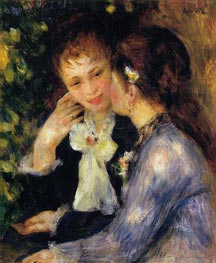
Confidences (Two Best Friends) c.1876/78
Oil Painting
$898
$898
Canvas Print
$74.70
$74.70
SKU: RPA-1884
Pierre-Auguste Renoir
Original Size: 61.5 x 50.5 cm
Oskar Reinhart Museum, Winterthur, Switzerland
Pierre-Auguste Renoir
Original Size: 61.5 x 50.5 cm
Oskar Reinhart Museum, Winterthur, Switzerland
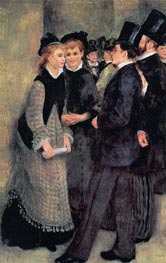
Leaving the Conservatory c.1876/77
Oil Painting
$1348
$1348
Canvas Print
$61.75
$61.75
SKU: RPA-1885
Pierre-Auguste Renoir
Original Size: 187.3 x 117.5 cm
Barnes Foundation, Merion, USA
Pierre-Auguste Renoir
Original Size: 187.3 x 117.5 cm
Barnes Foundation, Merion, USA
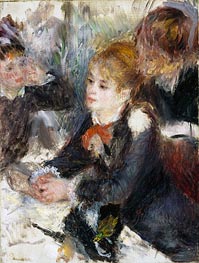
At the Milliner's c.1878
Oil Painting
$713
$713
Canvas Print
$61.75
$61.75
SKU: RPA-1886
Pierre-Auguste Renoir
Original Size: 32.9 x 24.8 cm
Fogg Art Museum at Harvard University, Massachusetts, USA
Pierre-Auguste Renoir
Original Size: 32.9 x 24.8 cm
Fogg Art Museum at Harvard University, Massachusetts, USA
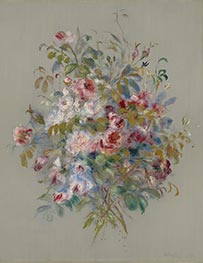
A Bouquet of Roses 1879
Oil Painting
$1042
$1042
Canvas Print
$72.66
$72.66
SKU: RPA-1887
Pierre-Auguste Renoir
Original Size: 83.1 x 65.7 cm
The Clark Art Institute, Massachusetts, USA
Pierre-Auguste Renoir
Original Size: 83.1 x 65.7 cm
The Clark Art Institute, Massachusetts, USA

The Rose Garden at Wargemont 1879
Oil Painting
$1153
$1153
Canvas Print
$61.75
$61.75
SKU: RPA-1888
Pierre-Auguste Renoir
Original Size: unknown
Private Collection
Pierre-Auguste Renoir
Original Size: unknown
Private Collection
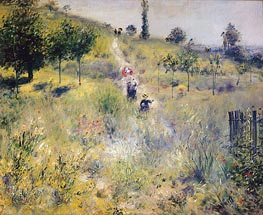
Path Leading through Tall Grass 1876
Oil Painting
$929
$929
Canvas Print
$74.87
$74.87
SKU: RPA-1889
Pierre-Auguste Renoir
Original Size: 60 x 74 cm
Musee d'Orsay, Paris, France
Pierre-Auguste Renoir
Original Size: 60 x 74 cm
Musee d'Orsay, Paris, France
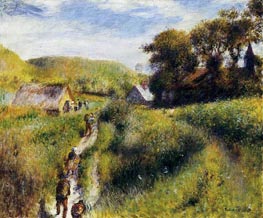
The Grape Harvesters (The Vintagers) 1879
Oil Painting
$822
$822
Canvas Print
$77.43
$77.43
SKU: RPA-1890
Pierre-Auguste Renoir
Original Size: 54.2 x 65.4 cm
National Gallery of Art, Washington, USA
Pierre-Auguste Renoir
Original Size: 54.2 x 65.4 cm
National Gallery of Art, Washington, USA
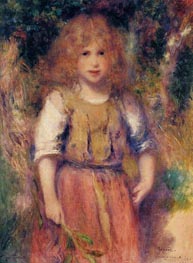
Gypsy Girl 1879
Oil Painting
$854
$854
Canvas Print
$61.75
$61.75
SKU: RPA-1891
Pierre-Auguste Renoir
Original Size: 73 x 54 cm
Private Collection
Pierre-Auguste Renoir
Original Size: 73 x 54 cm
Private Collection
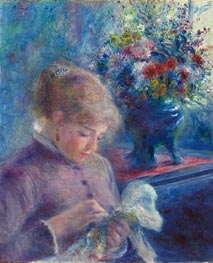
Young Woman Sewing c.1879
Oil Painting
$954
$954
Canvas Print
$75.89
$75.89
SKU: RPA-1892
Pierre-Auguste Renoir
Original Size: 61.5 x 50.3 cm
Art Institute of Chicago, Illinois, USA
Pierre-Auguste Renoir
Original Size: 61.5 x 50.3 cm
Art Institute of Chicago, Illinois, USA
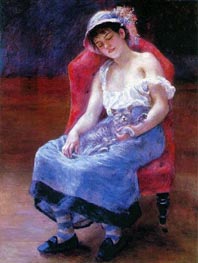
Sleeping Girl (Girl with a Cat) 1880
Oil Painting
$1058
$1058
Canvas Print
$71.80
$71.80
SKU: RPA-1893
Pierre-Auguste Renoir
Original Size: 120.1 x 92.2 cm
The Clark Art Institute, Massachusetts, USA
Pierre-Auguste Renoir
Original Size: 120.1 x 92.2 cm
The Clark Art Institute, Massachusetts, USA
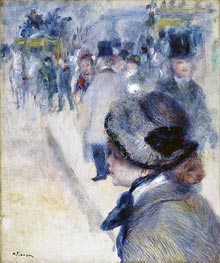
Place Clichy c.1880
Oil Painting
$758
$758
Canvas Print
$77.59
$77.59
SKU: RPA-1894
Pierre-Auguste Renoir
Original Size: 64 x 53.5 cm
Fitzwilliam Museum, Cambridge, UK
Pierre-Auguste Renoir
Original Size: 64 x 53.5 cm
Fitzwilliam Museum, Cambridge, UK
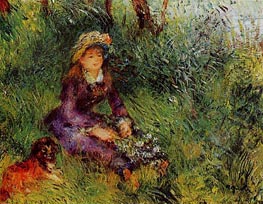
Madame Renoir with a Dog 1880
Oil Painting
$647
$647
Canvas Print
$61.75
$61.75
SKU: RPA-1895
Pierre-Auguste Renoir
Original Size: 32 x 41 cm
Durand-Ruel Collection, Paris, France
Pierre-Auguste Renoir
Original Size: 32 x 41 cm
Durand-Ruel Collection, Paris, France

Near the Lake c.1879
Oil Painting
$861
$861
Canvas Print
$79.19
$79.19
SKU: RPA-1896
Pierre-Auguste Renoir
Original Size: 46.2 x 55.4 cm
Art Institute of Chicago, Illinois, USA
Pierre-Auguste Renoir
Original Size: 46.2 x 55.4 cm
Art Institute of Chicago, Illinois, USA
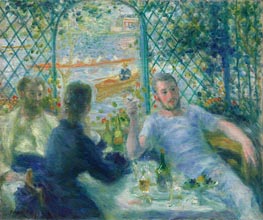
Lunch at the Restaurant Fournaise c.1879
Oil Painting
$923
$923
Canvas Print
$78.27
$78.27
SKU: RPA-1897
Pierre-Auguste Renoir
Original Size: 55.1 x 65.9 cm
Art Institute of Chicago, Illinois, USA
Pierre-Auguste Renoir
Original Size: 55.1 x 65.9 cm
Art Institute of Chicago, Illinois, USA
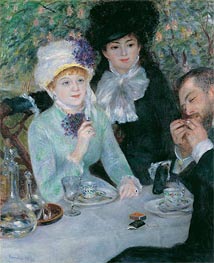
The End of the Luncheon 1879
Oil Painting
$1362
$1362
Canvas Print
$76.40
$76.40
SKU: RPA-1898
Pierre-Auguste Renoir
Original Size: 101 x 81 cm
Stadel Museum, Frankfurt, Germany
Pierre-Auguste Renoir
Original Size: 101 x 81 cm
Stadel Museum, Frankfurt, Germany
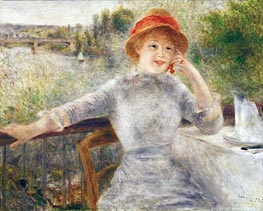
Alphonsine Fournaise on the Isle of Chatou 1879
Oil Painting
$1077
$1077
Canvas Print
$74.87
$74.87
SKU: RPA-1899
Pierre-Auguste Renoir
Original Size: 73.5 x 93 cm
Musee d'Orsay, Paris, France
Pierre-Auguste Renoir
Original Size: 73.5 x 93 cm
Musee d'Orsay, Paris, France
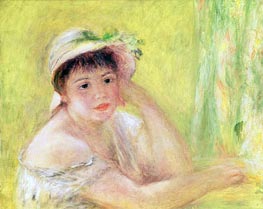
Woman with a Straw Hat (Alpphonsine Fournaise) c.1879/80
Oil Painting
$788
$788
Canvas Print
$94.36
$94.36
SKU: RPA-1900
Pierre-Auguste Renoir
Original Size: 50 x 61 cm
Private Collection
Pierre-Auguste Renoir
Original Size: 50 x 61 cm
Private Collection
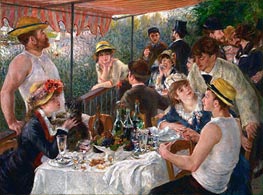
Luncheon of the Boating Party c.1880/81
Oil Painting
$8898
$8898
Canvas Print
$68.92
$68.92
SKU: RPA-1901
Pierre-Auguste Renoir
Original Size: 130.1 x 175.5 cm
Phillips Collection, Washington, USA
Pierre-Auguste Renoir
Original Size: 130.1 x 175.5 cm
Phillips Collection, Washington, USA
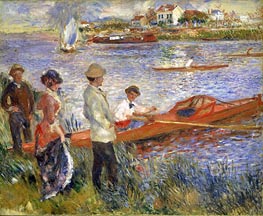
Oarsmen at Chatou 1879
Oil Painting
$1005
$1005
Canvas Print
$76.06
$76.06
SKU: RPA-1902
Pierre-Auguste Renoir
Original Size: 81.3 x 100.3 cm
National Gallery of Art, Washington, USA
Pierre-Auguste Renoir
Original Size: 81.3 x 100.3 cm
National Gallery of Art, Washington, USA
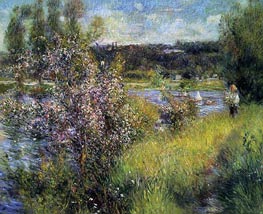
The Saine at Chatou c.1881
Oil Painting
$1042
$1042
Canvas Print
$61.75
$61.75
SKU: RPA-1903
Pierre-Auguste Renoir
Original Size: 73.5 x 92.5 cm
Boston Museum of Fine Arts, Massachusetts, USA
Pierre-Auguste Renoir
Original Size: 73.5 x 92.5 cm
Boston Museum of Fine Arts, Massachusetts, USA

The Bridge at Argenteuil in Autumn 1882
Oil Painting
$766
$766
Canvas Print
$69.11
$69.11
SKU: RPA-1904
Pierre-Auguste Renoir
Original Size: unknown
Private Collection
Pierre-Auguste Renoir
Original Size: unknown
Private Collection

At the Concert (Box at the Opera) 1880
Oil Painting
$1215
$1215
Canvas Print
$74.70
$74.70
SKU: RPA-1905
Pierre-Auguste Renoir
Original Size: 99.2 x 80.6 cm
The Clark Art Institute, Massachusetts, USA
Pierre-Auguste Renoir
Original Size: 99.2 x 80.6 cm
The Clark Art Institute, Massachusetts, USA
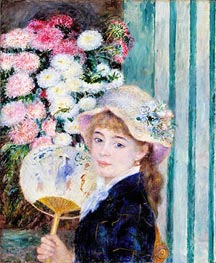
Girl with a Fan c.1879/80
Oil Painting
$955
$955
Canvas Print
$78.79
$78.79
SKU: RPA-1906
Pierre-Auguste Renoir
Original Size: 65 x 54 cm
The Clark Art Institute, Massachusetts, USA
Pierre-Auguste Renoir
Original Size: 65 x 54 cm
The Clark Art Institute, Massachusetts, USA
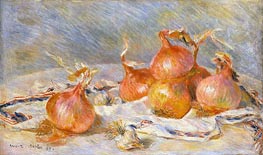
Onions 1881
Oil Painting
$673
$673
Canvas Print
$61.75
$61.75
SKU: RPA-1907
Pierre-Auguste Renoir
Original Size: 39.1 x 60.6 cm
The Clark Art Institute, Massachusetts, USA
Pierre-Auguste Renoir
Original Size: 39.1 x 60.6 cm
The Clark Art Institute, Massachusetts, USA